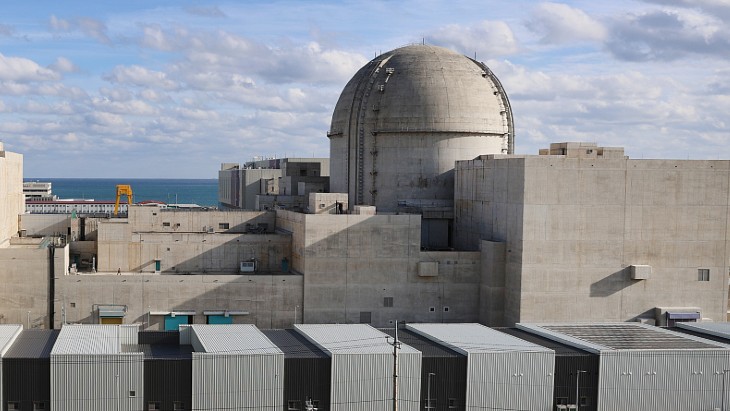Responding to media reports of a leak at the plant in China's Guangdong province, China General Nuclear (CGN) announced on 13 June that Taishan 1 was operating at full power and there had been no release of radiation.
France's EDF, which holds a 30% stake in the two-unit plant, announced the following day it had been informed of an increase in the concentration of certain noble gases in the EPR reactor's primary circuit. However, it noted this is "a known phenomenon, studied and provided for in the reactor operating procedures".
The NNSA has now said the increase in the specific activity of the coolant in the reactor's primary loop is "mainly related to damaged fuel rods".
"Due to the influence of uncontrollable factors such as fuel manufacturing, transportation, loading, etc, a small amount of fuel rod damage during the operation of nuclear power plants is unavoidable, which is a common phenomenon," an NNSA spokesman said. "According to relevant data, many nuclear power plants around the world have experienced fuel rod damage and have continued operating.
"Within the scope of allowing stable operation and meeting the requirements of technical specifications, the operational safety of nuclear power plants is guaranteed," he said.
The NNSA estimates that of more than 60,000 fuel rods in the core of Taishan 1, about five probably have damage to their cladding. "The proportion of damaged fuel rods is less than 0.01% of the total, which is much lower than the maximum damage of the fuel assembly assumed in the design proportion (0.25%)," it noted.
Nuclear fuel operates in a harsh environment in which high temperature, chemical corrosion, radiation damage and physical stresses may attack the integrity of a fuel assembly. The life of a fuel assembly in a reactor core is therefore regulated to a burn-up level at which the risk of its failure is still low. Fuel 'failure' refers to a situation when the cladding has been breached and radioactive material leaks from the fuel ceramic (pellet) into the reactor coolant water. The radioactive materials with most tendency to leak through a cladding breach into the reactor coolant are fission-product gases and volatile elements, notably krypton, xenon, iodine and caesium.
Fuel leaks do not present a significant risk to plant safety, though they have a big impact on reactor operations and (potentially) on plant economics. For this reason, primary coolant water is monitored continuously for these species so that any leak is quickly detected. The permissible level of released radioactivity is strictly regulated against specifications which take into account the continuing safe operation of the fuel.
The nuclear industry has made significant performance improvements reducing fuel failure rates by about 60% in the 20 years to 2006 to an average of some 14 leaks per million rods loaded, according to International Atomic Energy Agency (IAEA) figures.
No radiation leak at Taishan
Referring to reports of a leak at Taishan, the NNSA spokesman said the increase in the level of radioactivity in the primary circuit is completely different from a radiological leakage accident. "The primary circuit is inside the reactor containment. As long as the pressure boundary of the reactor coolant system as a radioactive containment barrier and the containment tightness meet the requirements, there is no possibility of radioactivity leaking to the environment."
He also dismissed claims the NNSA had approved an increase in the acceptable limit of radiation detection outside the Taishan plant in order for the plant to continue operating. He said the NNSA reviewed and approved the relevant limits for the specific activity of the noble gas of the reactor coolant in the technical specifications of the primary circuit chemistry and radiochemistry of the plant. "This limit is used for operation management and has nothing to do with the external radiation detection of the nuclear power plant."
NNSA said it will: continue to closely monitor the radioactivity level of the primary circuit of Taishan 1, strengthen on-site supervision and environmental monitoring; guide and supervise the operating units to take measures to strictly control the radioactivity level of the primary circuit, and strictly abide by the operation technical specifications to ensure that unit 1 runs safely. It will also maintain communication with the IAEA and the French nuclear safety regulatory authority.
Taishan 1 and 2 are the first two reactors based on the EPR design to begin operating anywhere in the world so far. The 1750-megawatt reactors entered commercial operation in December 2018 and September 2019, respectively. The Taishan project - 140 kilometres west of Hong Kong - is owned by TNPJVC, a joint venture between CGN (51%), EDF (30%) and the Chinese utility Guangdong Energy Group (19%).

.jpg)



_72306.jpg)


_49562.jpg)





